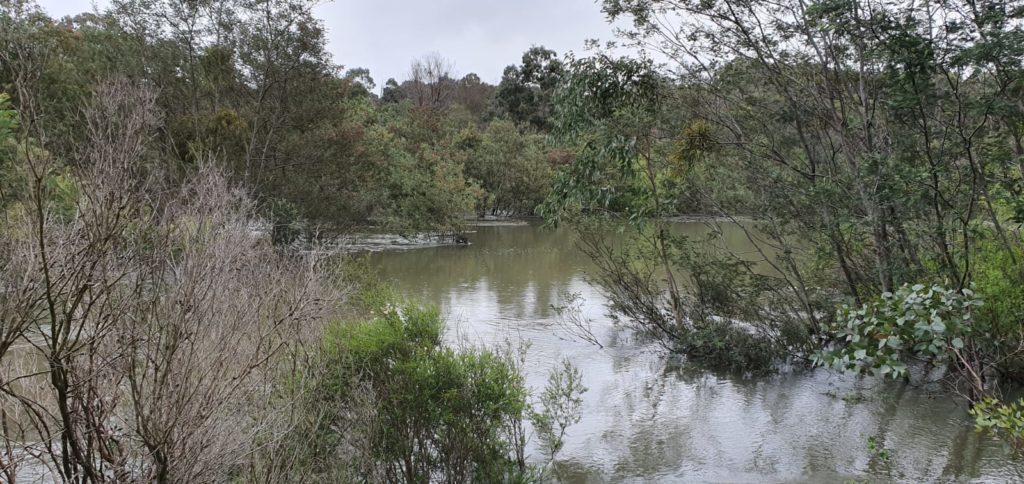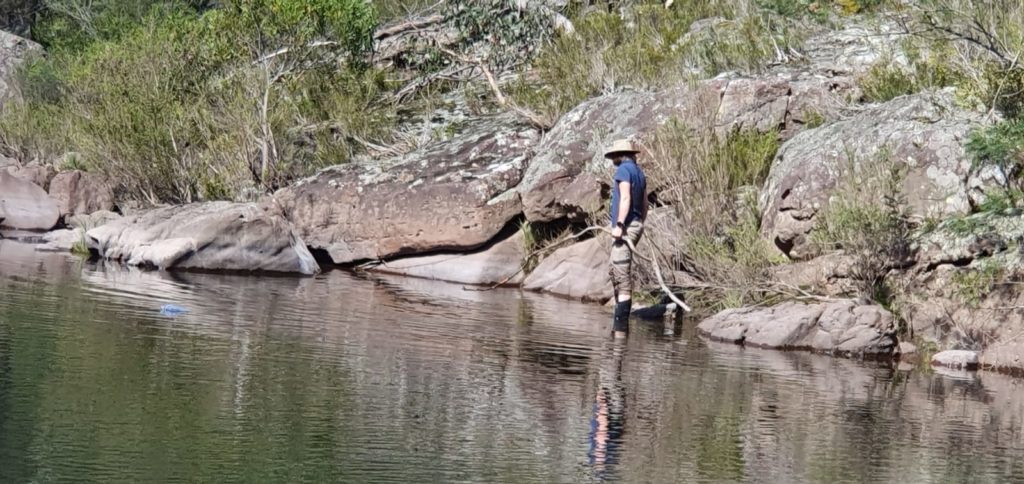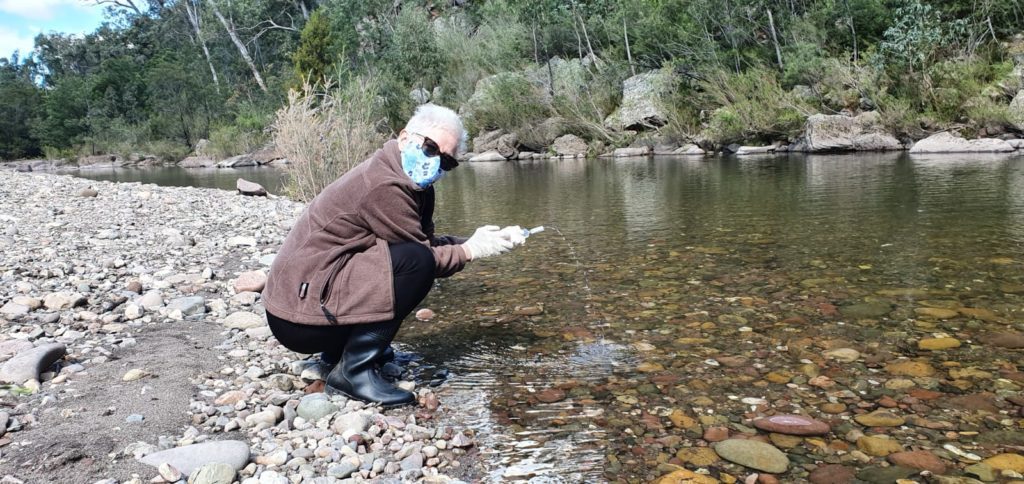
The platypus is endemic to Eastern and Southern Australia and can be found in streams, rivers, mountain lakes, farm dams, and even urban waterways.
There is mounting evidence that platypus numbers are decreasing due to factors such as climate change, introduced predators, pollution and habitat destruction. The scientific community is calling for the platypus to be recognised as a nationally threatened species.
To research and monitor platypus populations and better understand the long-term impacts of the 2019-20 summer bushfires on platypus populations in East Gippsland, in 2020 the eDNA Platypus Project was established. The project is facilitated by East Gippsland Landcare Network (EGLN) and EnviroDNA, funded by WIRES and Landcare Australia.
eDNA Platypus Project, led by ecologist and platypus researcher Josh Griffiths, engages citizen scientists to collect water samples from key sites in East Gippsland. With over 100 sites surveyed in total, 55 of those samples were collected by volunteers. The water samples are analysed for genetic material such as hair, skin and waste from platypus inhabiting the sites.
EcoGipps is thrilled to be participating in the project and has taken the initial spring water samples at three sites across different EcoGipps Blocks.






The samples are collected by a syringe and filter method, where the river water is drawn into the syringe and then expelled back out of the syringe through a fine filter. This process is repeated until around 500ml river water has been expelled through the filter and therefore sufficient DNA has been collected onto the filter. This process needs to be done in a sterile manner with gloves worn to prevent any sample contamination. The filters containing the DNA samples are then stored frozen until collected for analysis by the EnviroDNA team.
EcoGipps citizen scientists took the spring water samples from three sites: Macalister River on Block 1, Ben Cruachan Creek on Block 4 and Avon River between Block 3 and 4. The exact coordinates of these sites have been recorded to allow continuity when the Autumn water samples are taken at the same sites.
As platypus are notoriously hard to spot, this method of DNA scanning water samples is an effective method to identify crucial data to inform about platypus populations and habitat.
EnviroDNA has recently analysed the water samples for sites that have data for pre and post 2019-2020 bushfires, finding a significant decrease in platypus detection since the fires. However, these results are preliminary and for a number of the sites this spring was the first time they had been surveyed, so it is important to couple the results with the upcoming autumn sampling to give a more accurate picture of the effects on platypus in East Gippsland.
